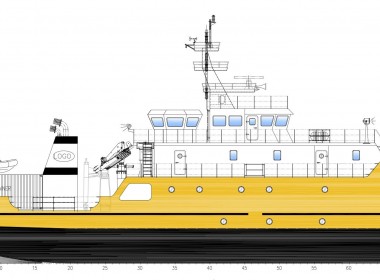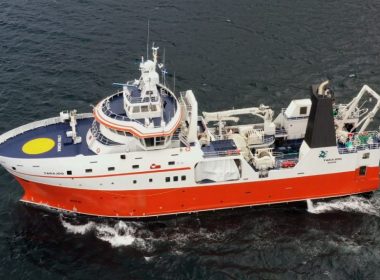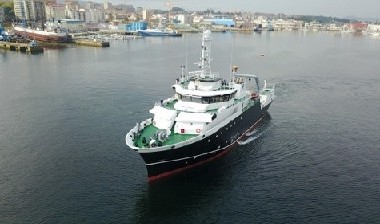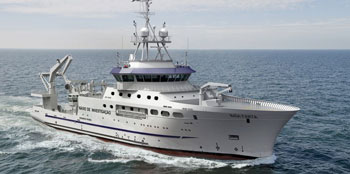VESSEL REVIEW | Imua – Catamaran research vessel to operate in Hawaiian waters

The University of Hawai’i at Manoa has taken delivery of a new multi-purpose catamaran research vessel.
The vessel is named Imua after the translation of the phrase “to move forward” in the Hawaiian language. The 68.5- by 25-foot (20.8- by 7.62-metre) vessel utilises a semi-displacement aluminium catamaran hull that was developed by Nic de Waal of New Zealand-based naval architecture firm Teknicraft Design. The vessel was constructed to US Coast Guard standards and will operate as in Hawaiian waters from shallow coastal areas out to 150 nautical miles offshore.
The vessel integrates Teknicraft’s proprietary symmetrical and asymmetrical combined hull shape, a bow wave piercer, and a patented hydrofoil-assisted hull design. The hull and hull components are designed to break up wave action and ensure reduced drag while enhancing passenger comfort.
The innovative dynamic hydrofoil-assisted hull design is meanwhile proven to have low-wake wash energy and fuel economy. The main foil action reduces the power needed to maintain service speed, ensuring fuel consumption and operating costs are reduced significantly while also further enhancing the softness of the ride, especially in choppy seas.
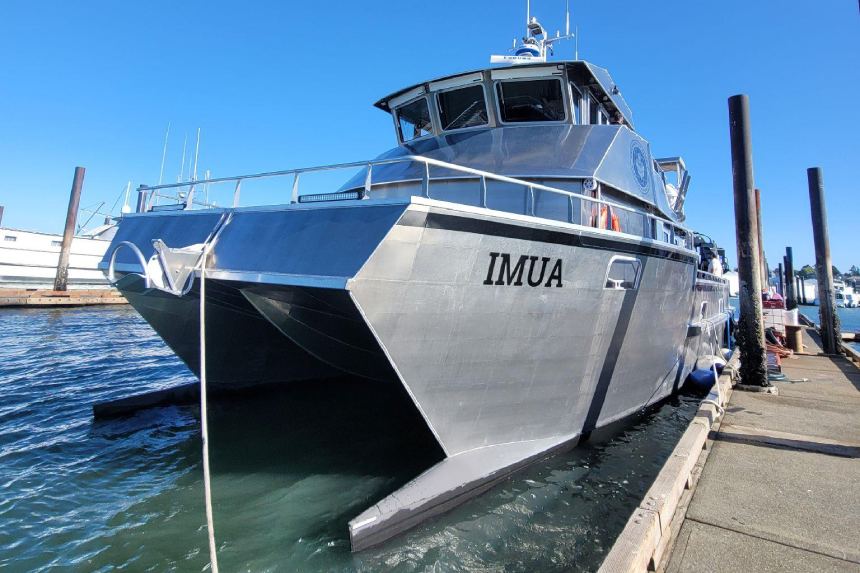
Teknicraft’s unique hydrofoil system consists of the main foil spanning the tunnel at the keel. This vessel also included transom-mounted Humphree interceptors. The lift produced by the hydrofoil reduces the hull resistance while increasing speed and load-bearing capability, while the interceptors offer additional trim control.
The advanced hull shape was custom-designed using digital modeling and CFD analysis testing. The vessel’s design offers all passengers and crew a smooth ride and comfort, as the hull provides a cushioned effect when encountering waves.
Fuel economy is achieved while also maintaining an estimated fully laden cruise speed of 22 to 24 knots and a fuel-efficient minimum survey speed of three knots. With a large fuel capacity of 1,800 gallons (6,813 litres), the catamaran will support a science team of eight personnel on offshore multi-day missions and 22 students/crew on shorter day excursions.
The propulsion package includes two fixed-pitch propellers connected to Scania DI16 082M US EPA Tier III engines each rated at 800 hp (596 kW) at 2,100 rpm.
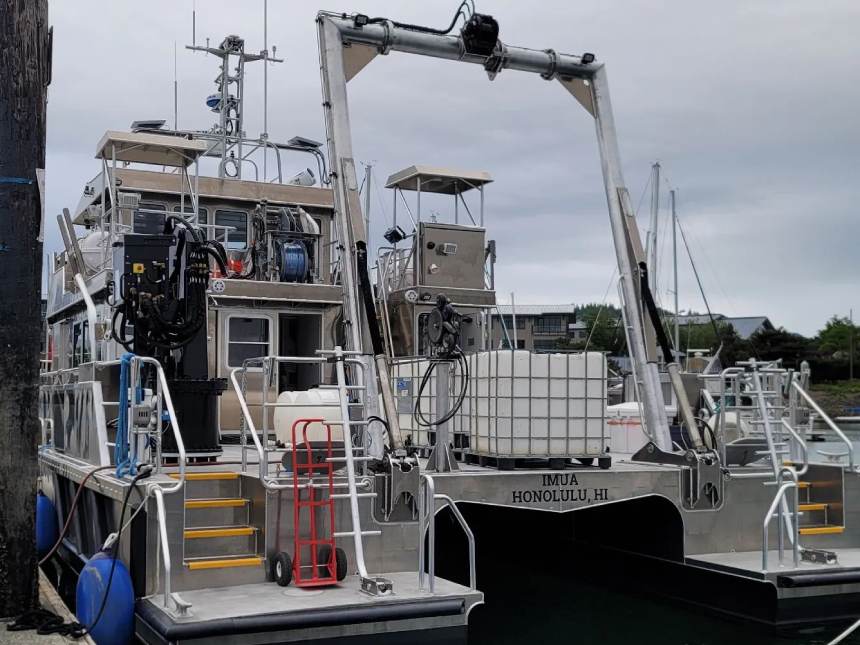
Scientists and crew have access to comfortable live-aboard quarters, large wet and dry laboratory spaces, and a range of modern oceanographic equipment that will enable them to conduct a variety of missions. The vessel was custom-designed to support a diverse portfolio of science and outreach missions including advanced studies on marine megafauna, pelagic and coastal ecosystem research, oceanographic surveys, and learning experiences for primary and secondary school students.
| Imua | |
| SPECIFICATIONS | |
| Type of vessel: | Research vessel |
| Classification: | US Coast Guard |
| Port of registry: | Honolulu, Hawaii, USA |
| Flag: | USA |
| Owner: | University of Hawai’i at Manoa, USA |
| Designer: | Teknicraft Design, New Zealand |
| Hull construction material: | Aluminium |
| Length overall: | 68.5 feet (20.8 metres) |
| Beam: | 25 feet (7.62 metres) |
| Main engines: | 2 x Scania DI16 082M, each 800 hp (596 kW) at 2,100 rpm |
| Propulsion: | 2 x fixed-pitch propellers |
| Cruising speed: | 24 knots |
| Other deck equipment: | A-frame |
| Other equipment installed: | Humphree interceptors |
| Fuel capacity: | 1,800 gallons (6,813 litres) |
| Accommodation: | Cabins; laboratories |
| Operational area: | Hawaii, USA |





